How we test air purifiers at Ideal Home and translate confusing specs into the information you *actually* need to know
We've put countless air purifiers through Ideal Home's testing process to find the best-in-class. Here's how we do it.

Amy Lockwood

Almost every member of the Ideal Home team has an air purifier, but as someone who struggles with hay fever, lives in a built-up town, and has a dog that sheds, I've taken a particular interest in these handy appliances. But I bet you're wondering how we test air purifiers at Ideal Home? Well, wonder no more.
As the team's resident air quality expert, it's my job to keep our best air purifier guide up to date with the top-rated models on the market. But compiling this guide is so much more than just personal opinion. Behind the scenes, we've created a foolproof (and thorough) testing process to ensure every air purifier is suitable for the everyday home.
From the setup process to the bacon test (yes, there's a bacon test!), myself and a team of approved testers put every air purifier - from budget air purifiers to air purifier-fan combos - through these tests. Then, only those that score highly will make it into the guide, and below I've outlined exactly how we test air purifiers so you can see how it's done.

Unboxing and setting up
Before I get to the nitty gritty of any air purifier review I write, my first section will always focus on the unboxing and setting up of the appliance. This is something the Ideal Home team does with any product we test, as we're huge advocates for green living and eco-friendly packaging.
And while many brands now send their products in minimal, recyclable packaging, there are others who ship their products off in unnecessary (and unrecyclable) alternatives. I will always note when this happens so you can be aware, too.
During this stage, I also like to take note of how heavy the box is, whether one person can easily carry it themselves, and what's actually inside the box - especially if the contents include spare accessories like filters or scented cartridges.




Although I test appliances for a living, I don't appreciate having to spend hours setting them up. That's why I always assess how easy the air purifier is to set up when we test air purifiers at Ideal Home, too.
Sign up to our newsletter for style inspiration, real homes, project and garden advice and shopping know-how
Best case scenario? I'd just need to unwrap the filter, pop it in place, and plug the appliance in to start using it. However, more modern air purifiers that come with Wi-Fi connectivity, apps, and extra parts often need some extra legwork, which I think everyone should know before they buy - especially if they're not as tech savvy as others.
Then, I take the time to assess the controls and features of the air purifier, understanding and relaying how easy they are to use and what you can expect from it. For example, you may want to use an air purifier to help hay fever, in which case a HEPA filter and a Sleep Mode would probably suit you best.
The design
While I tend not to judge a book by its cover, part of how we test air purifiers at Ideal Home is judging an air purifier by its design. After all, when adding a new appliance to my home, I want to know both how well it will perform and how well it will aesthetically fit into my space. Because of this, I always give myself time to assess the design of each air purifier I test.
Of course, whether an air purifier looks good or not is entirely subjective, but I always take note of how big (or small) the appliance is, what the colourway is like (and whether there are any alternatives), and how versatile I think the design is.






This is particularly important now, as the aesthetic of air purifiers has changed dramatically over the past few years and the standard, boring white appliances are now being replaced with multi-purpose, stylish alternatives that can fit seamlessly into your home without looking like an eyesore.
My particular favourite so far is the Dupray Bloom, which doubles up as a plant pot and a table, too.
Our air purifier tests
To help my readers determine which air purifier is right for them, I like to perform a series of air purifier tests. And whilst most air purifiers' technical specifications – such as CADR (clean air delivery rate) and HEPA filtration performance – are based on the air purifier's performance in a sealed laboratory, I prefer to test out each air purifier within a home environment. This means I can assess each air purifier's performance in real-life conditions.
Our first test involves testing each air purifier's ability to detect and filter out smoke. If the air purifier features a built-in air quality sensor, I switch it into automatic mode, light a match a safe distance from it, allow the match to burn out, and then time how long the air purifier takes to register the drop in air quality.
I then time how long it takes each air purifier to filter the smoke particles from the air and return the air quality to a 'very good' level of below 10µg/m³ PM2.5. I also do a 'nose test' to see if someone entering the room after the air purifier has 'done its thing' can still smell any trace of smoke.
If the air purifier doesn't feature an automatic mode, then I only perform the latter part of the test, and we use an independent device to measure how long the air purifier needs to run before the air quality is improved.

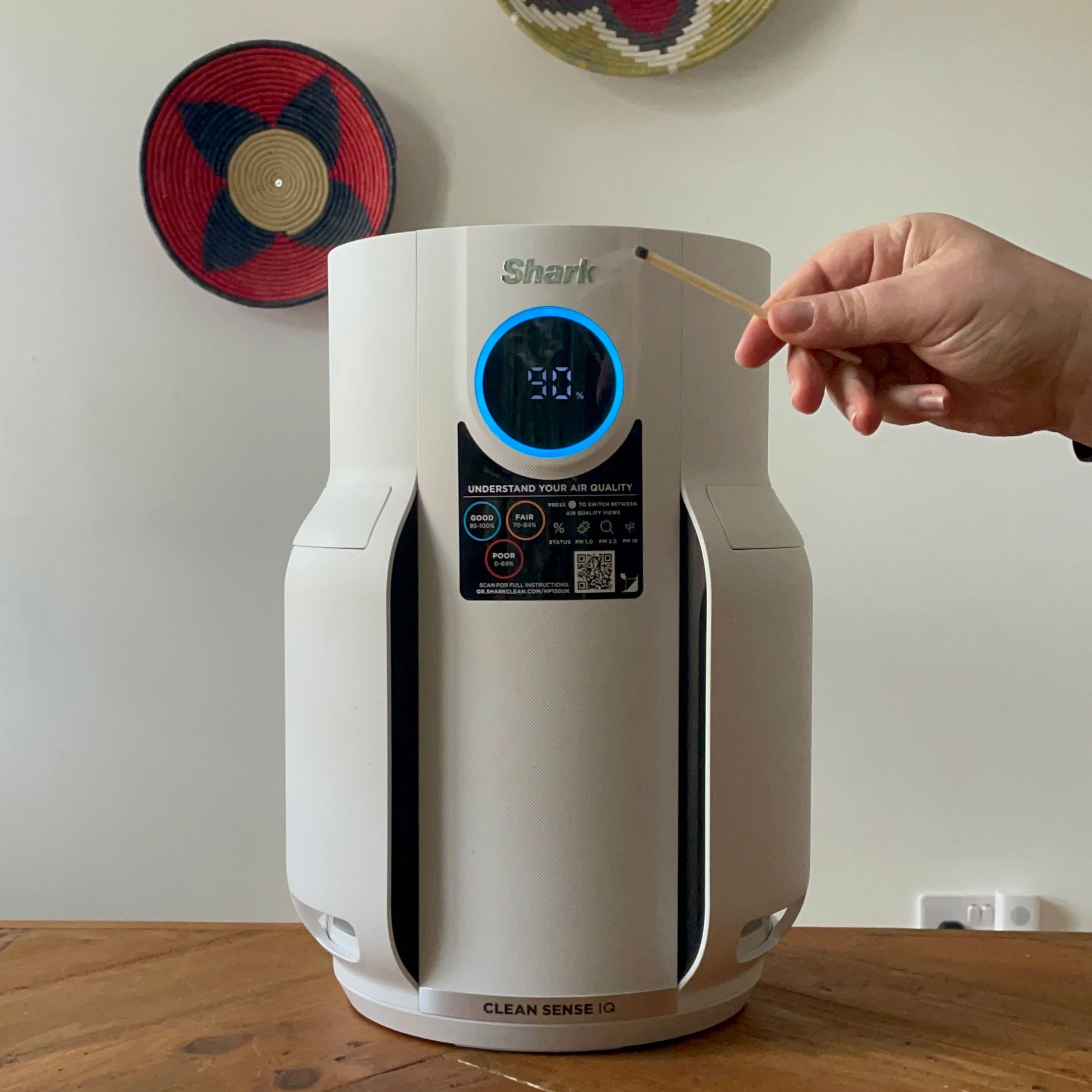


I also perform a similar test by spraying aerosol deodorant into the air near the air purifier, and timing how long each air purifier takes to register and then filter out any VOCs (Volatility Organic Compounds) and odours that may be present.
This test is particularly important to me, as I know that VOCs are everywhere, despite many people not realising it. In fact, they're released from new furniture, mattresses, paints, aerosol sprays, and more. They can be extremely harmful if left in the air, so I always like to test how long an air purifier takes to react and remove them from a home to keep everyone safe.


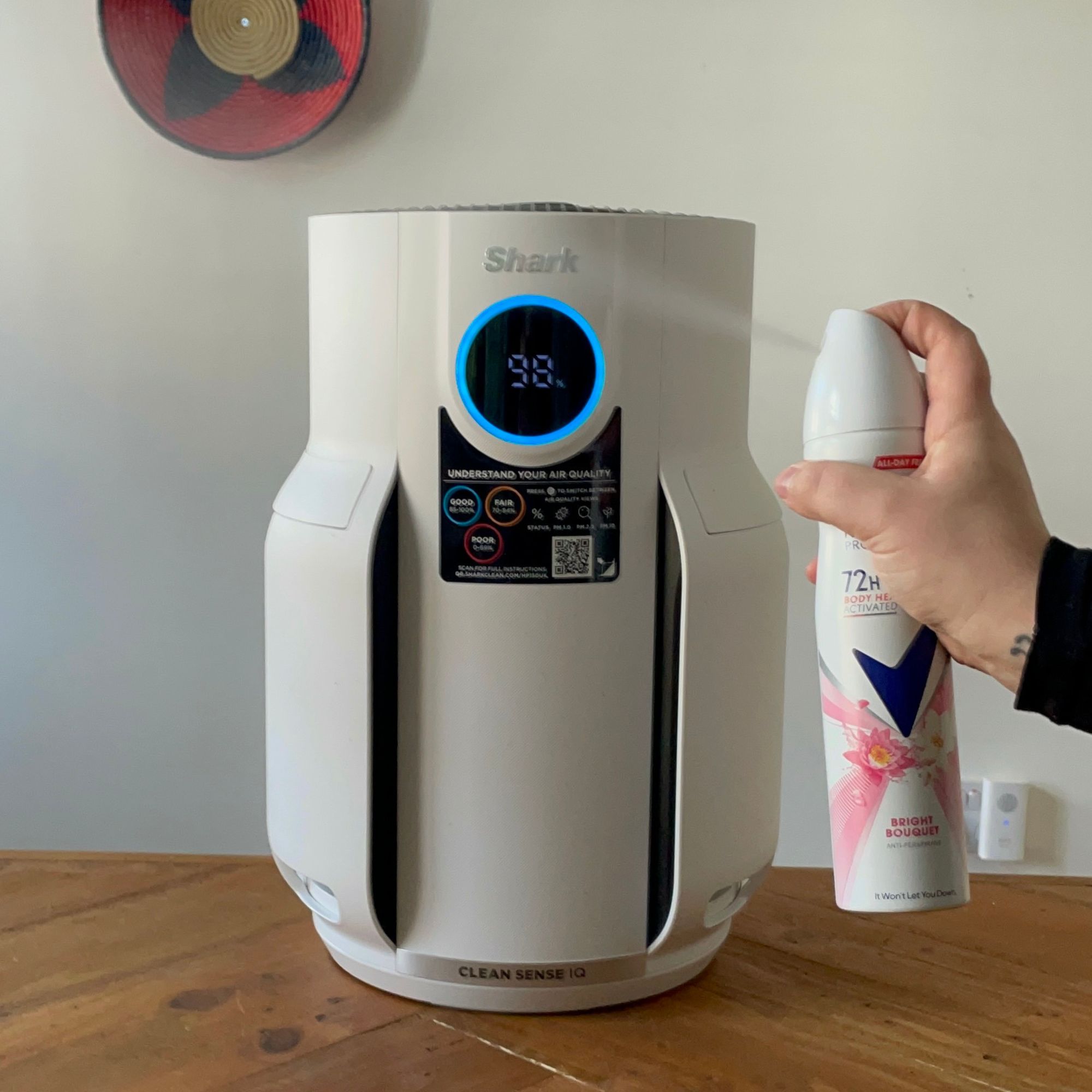

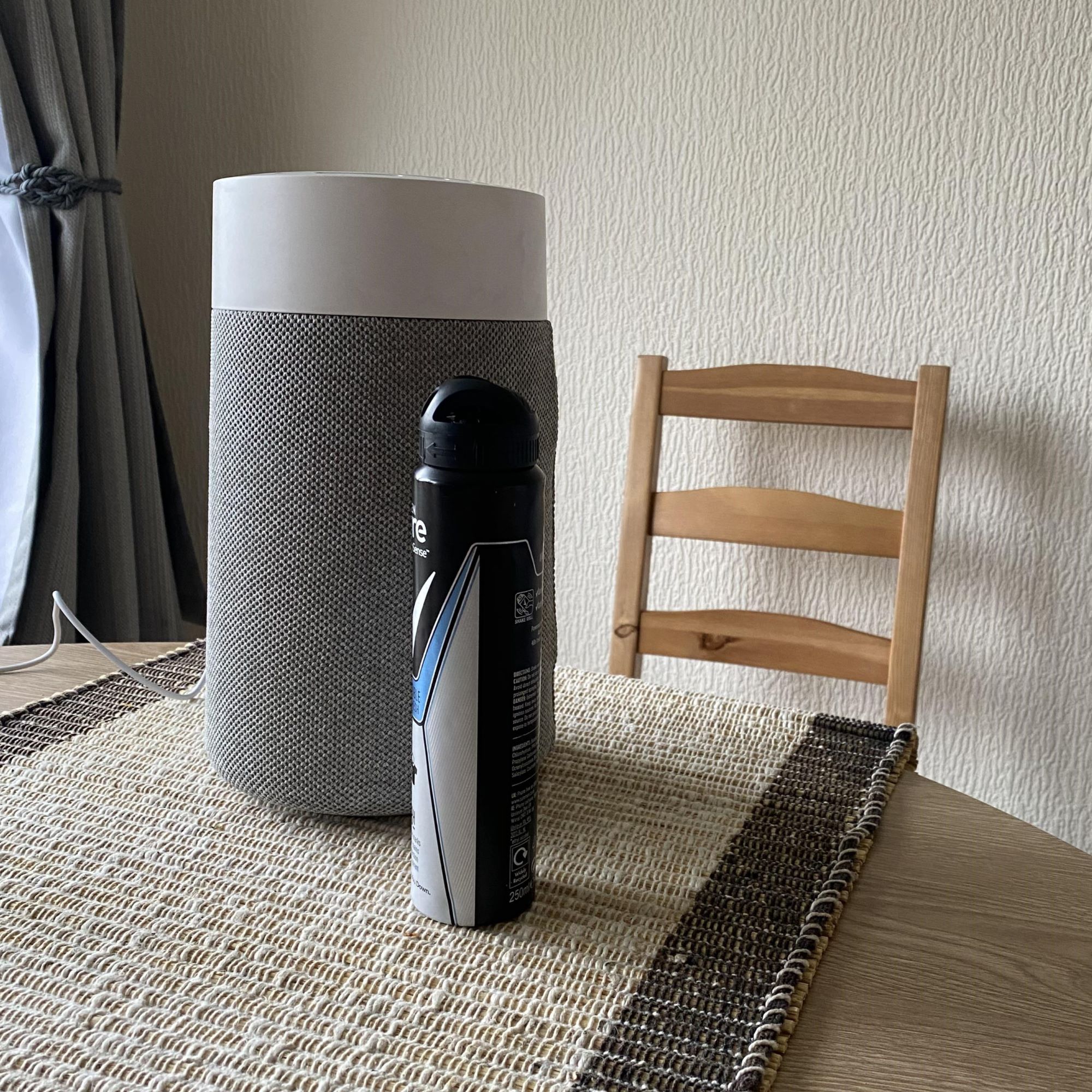
Next, I also put each air purifier's odour-filtering capabilities to the test in the kitchen. Our standard test involves closing the kitchen windows and doors, leaving any extractor fans switched off, and frying up two rashers of bacon (veggie bacon for me, or normal bacon for our other testers) until it's nice and crispy.
I then time how long each air purifier takes to register the decrease in air quality caused by the bacon fumes, and how long each air purifier takes to remove the cooking fumes from the kitchen.
This is the test that usually sends each air purifier into overdrive, with most of those appliances that feature a built-in air quality sensor registering a deterioration to 'very poor' air quality as soon as the bacon starts frying.

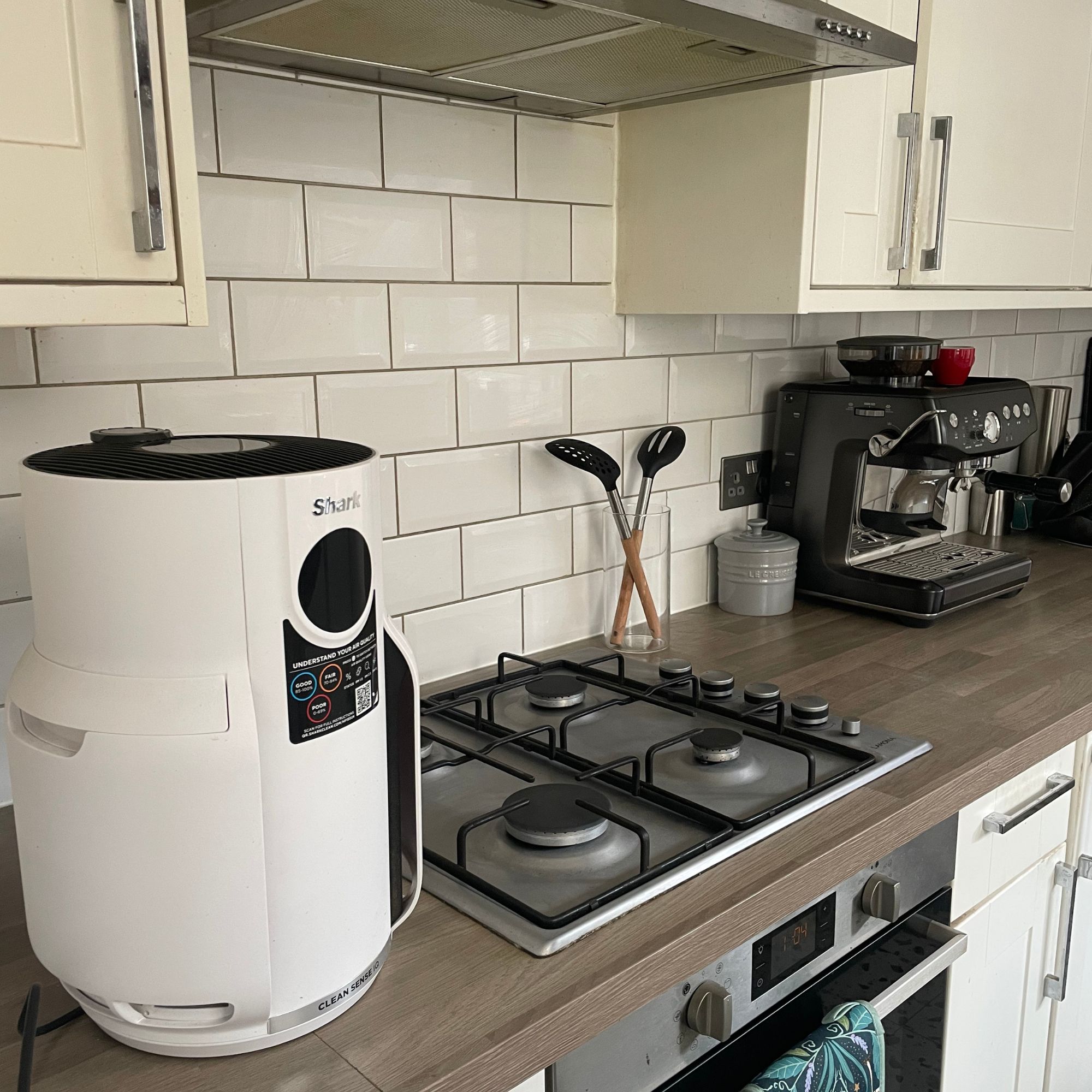
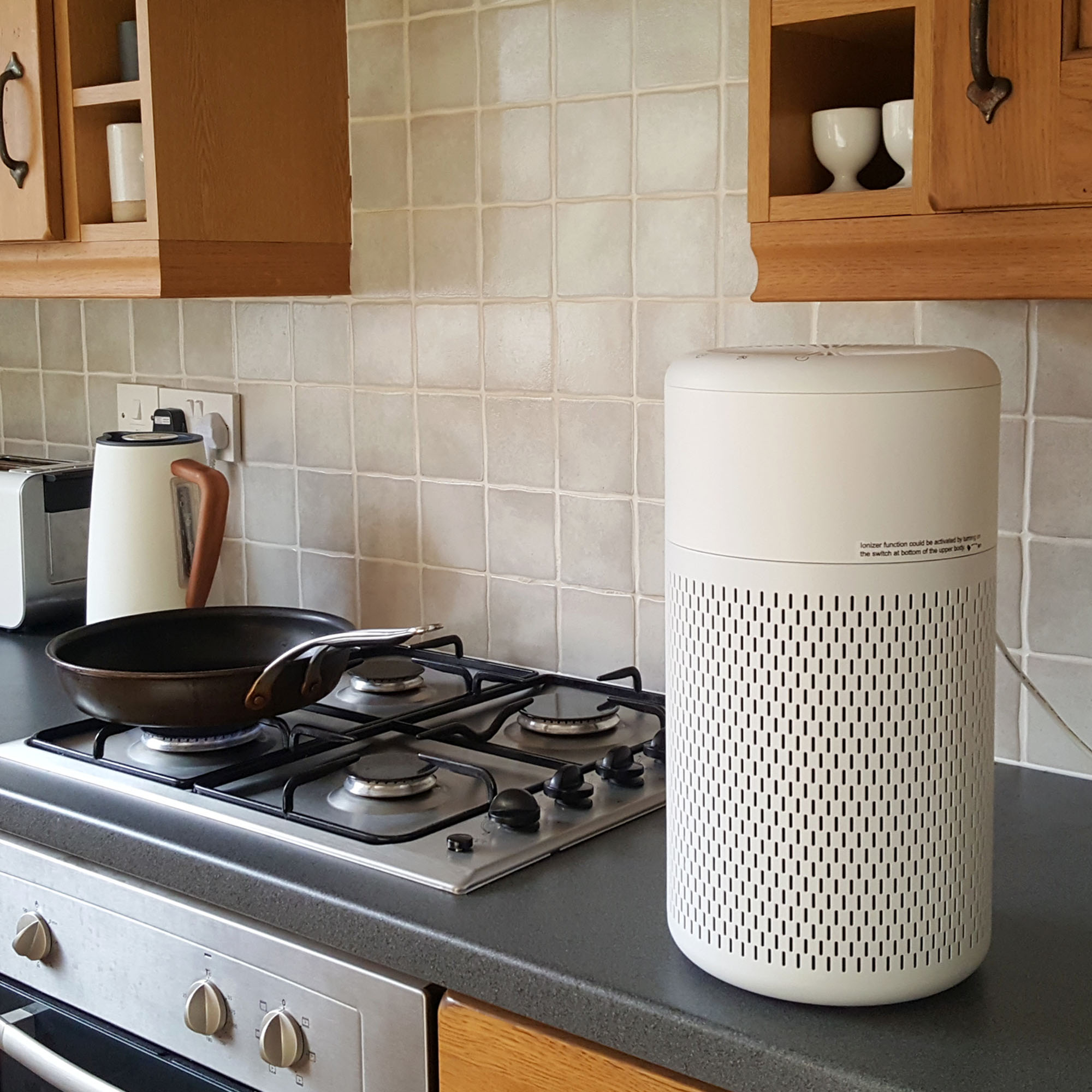




The testing isn't over at this point, though. As Ideal Home's Vacuum Expert, I'm also extremely conscious of the fact that vacuuming spreads dust - ruining my home's air quality in the process.
With this in mind, I also put each air purifier through a dust test. This (very glamourously) involves emptying the contents of a vacuum cleaner next to the air purifier to see if it triggers a response from those air purifiers that feature a built-in air quality sensor.
Myself and my Ideal Home-approved testers then time how long it takes the air purifier to react to the mess and how long it takes the air quality to return back to normal afterwards.


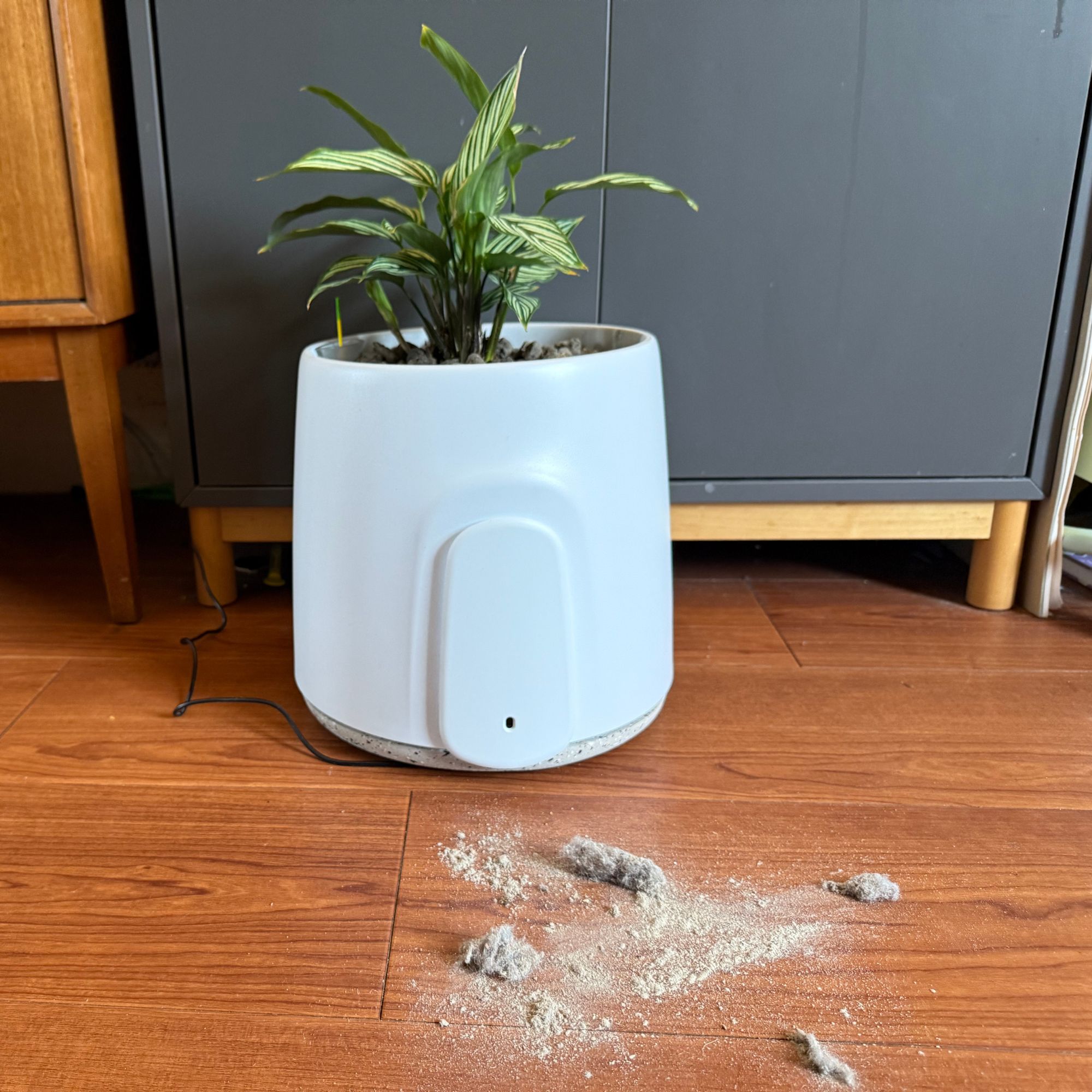
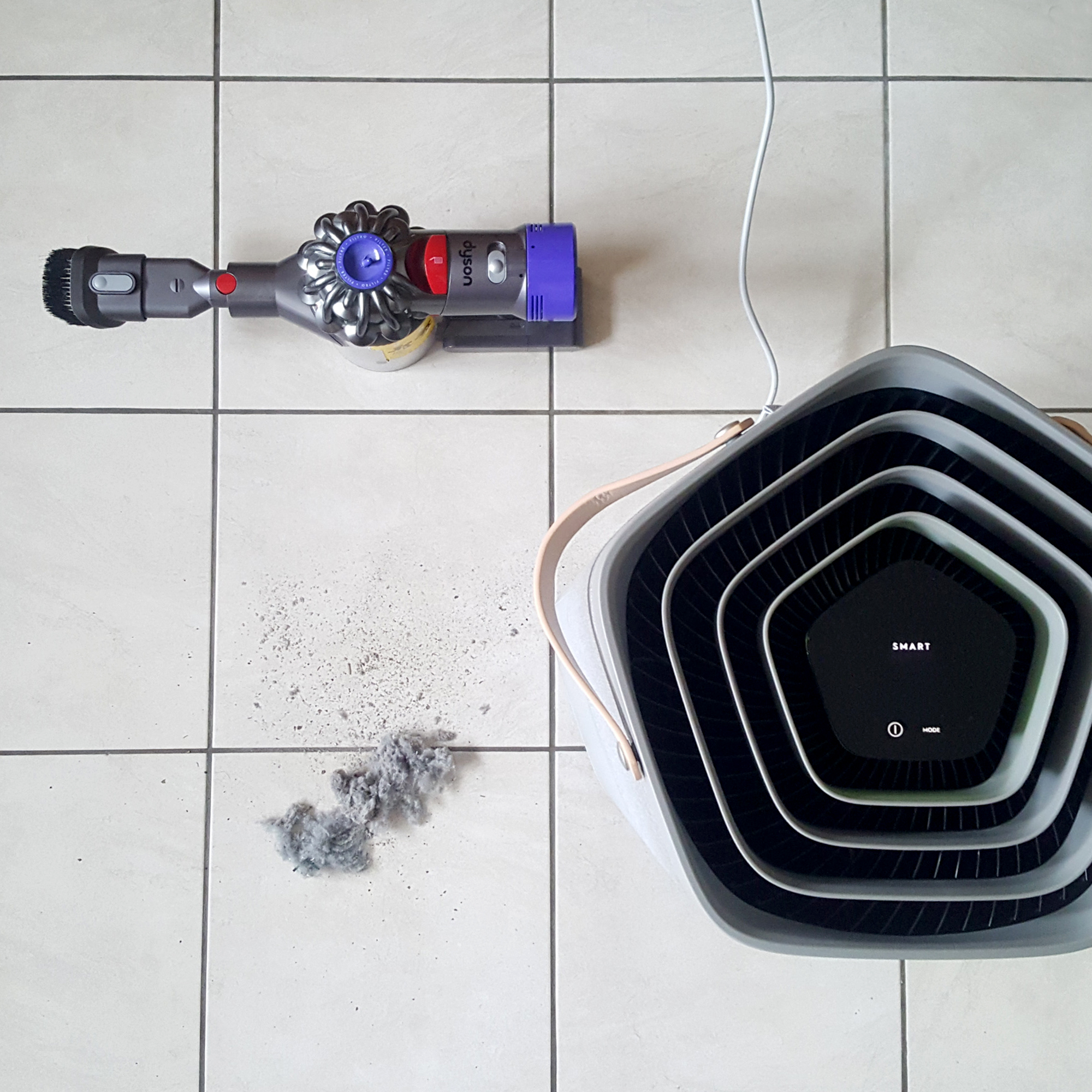


During this stage, I also like to assess the noise levels of the air purifiers before comparing all of the results of these tests to rate each air purifier's overall performance.
Cleaning and maintenance
It's super important to clean the things that clean for you, which is why knowing how to clean an air purifier is must-have knowledge. However, this varies from model to model.
That's why, as part of the air purifier testing process, I also carve out a section to assess all of the cleaning and maintenance requirements of each model.
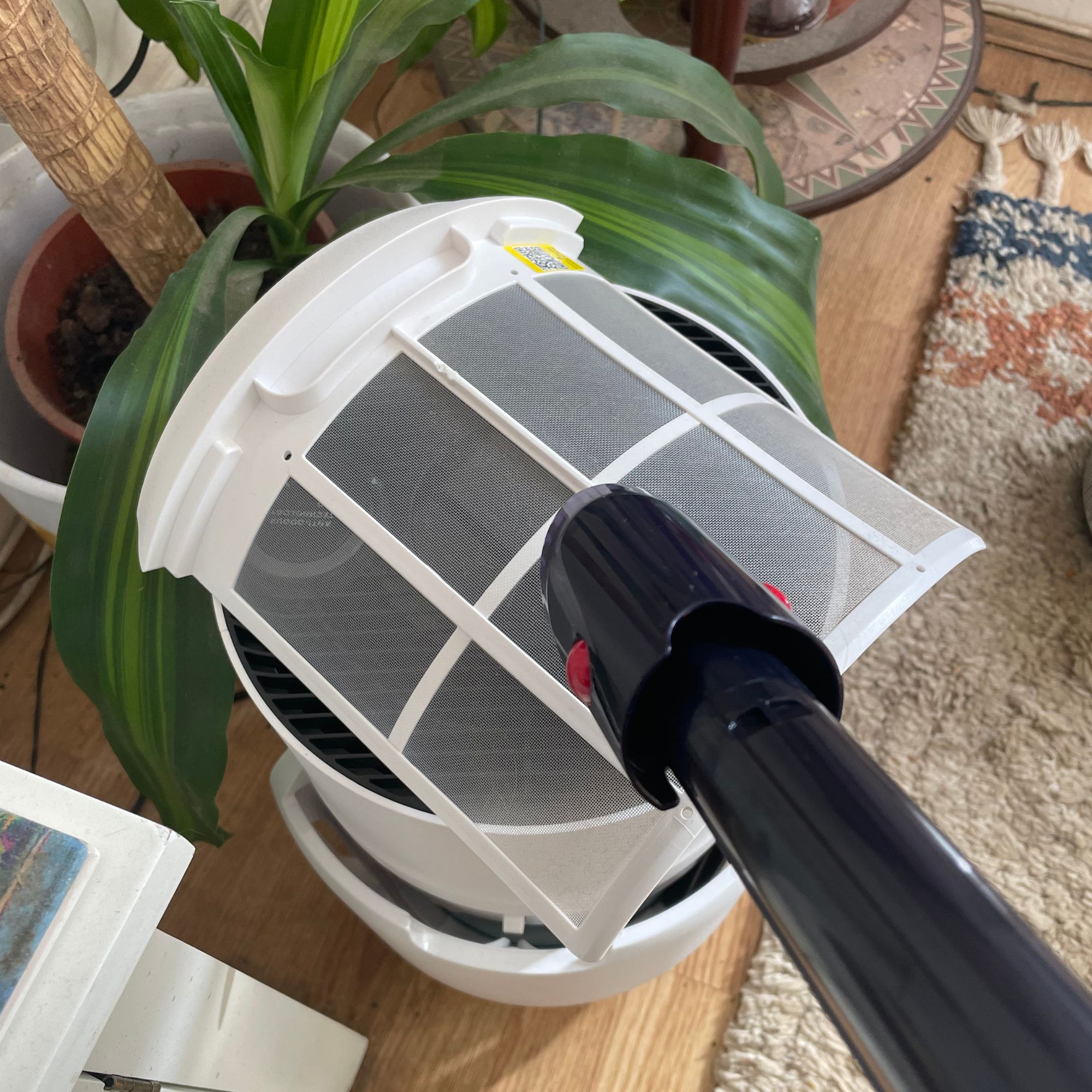
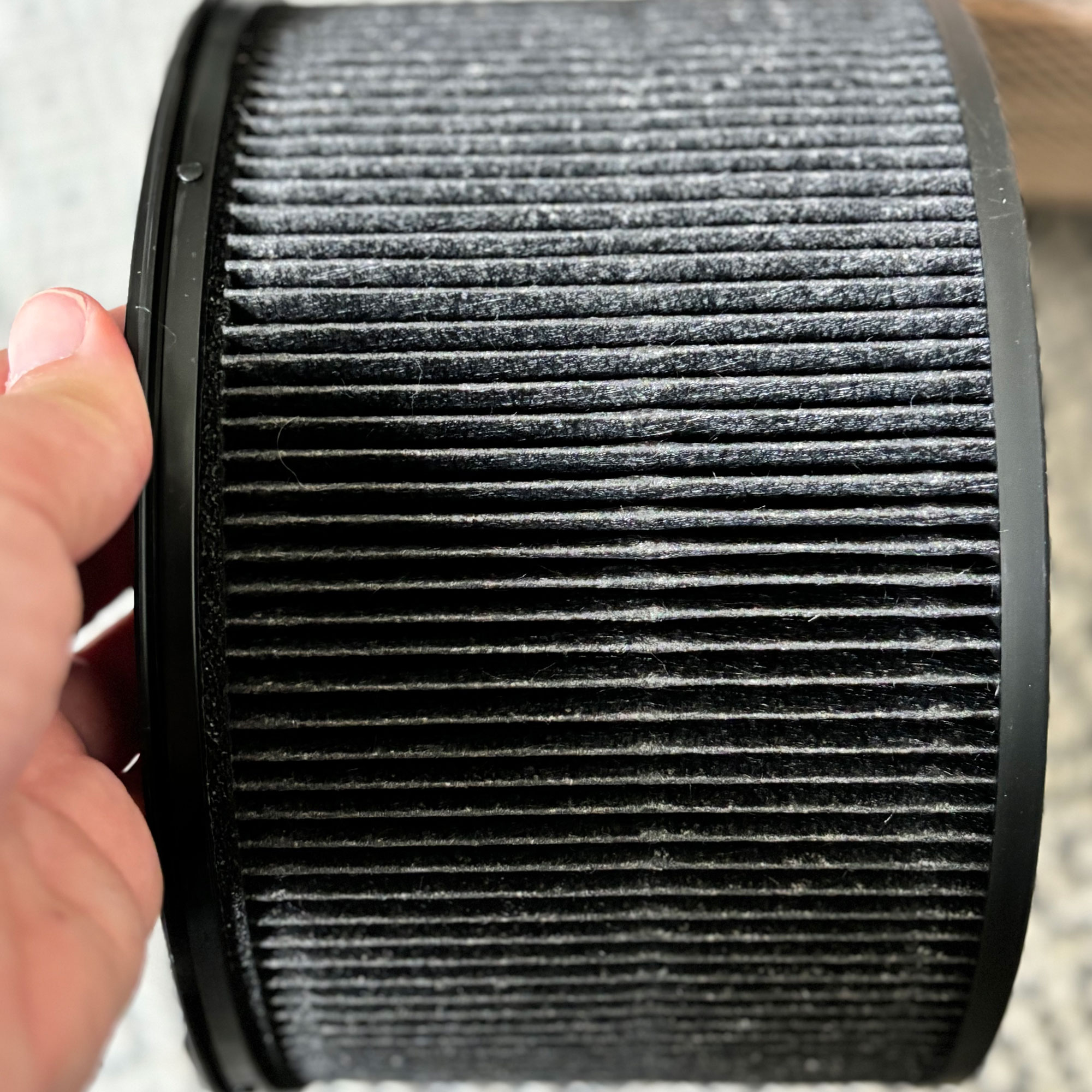


It may be that the air purifier can last five years without needing anything other than a quick vacuum of the filters, or it may be that the filters need to be washed (or even replaced) every six months.
I think it's important to share this information with potential buyers, as the cleaning and maintenance of an air purifier can incur costs and a lot of your time. So, I want you to know what you're getting into before you come back and hunt me down for not providing every little nugget of information.
Comparisons
I believe it's incredibly important to pit the air purifiers myself and the rest of the team test against each other, especially as I want to constantly update our buying guide with the most up-to-date and accurate information.
And as new air purifiers are released quicker than you can say 'airborne particulates,' it's down to us to keep you in the loop on whether these new products are worthy of their place in the guide.
That's why I always compare new air purifiers with older models in my reviews, to ensure you know that you're getting the best option for you and your needs. This also helps us maintain a flawless testing process across the board. So, it's a win-win.

Coming to a verdict
If you've got this far, thanks for sticking with me. After all, the verdict is ultimately what everyone wants to know, right? And to come to a verdict on the best air purifiers, I take all of the information above - including the overall cost and the value for money, and how much an air purifier costs to run - to give it an overall star rating out of 5.
All positives and negatives of each model will be clearly outlined, and myself and the team are always 100% honest and impartial when it comes to this rating. We're also in no way impacted by the fact that these air purifiers are often supplied by the brand for us to review. In some cases, we won't publish a review if we don't think the product deserves one.
Our top-rated air purifiers right now
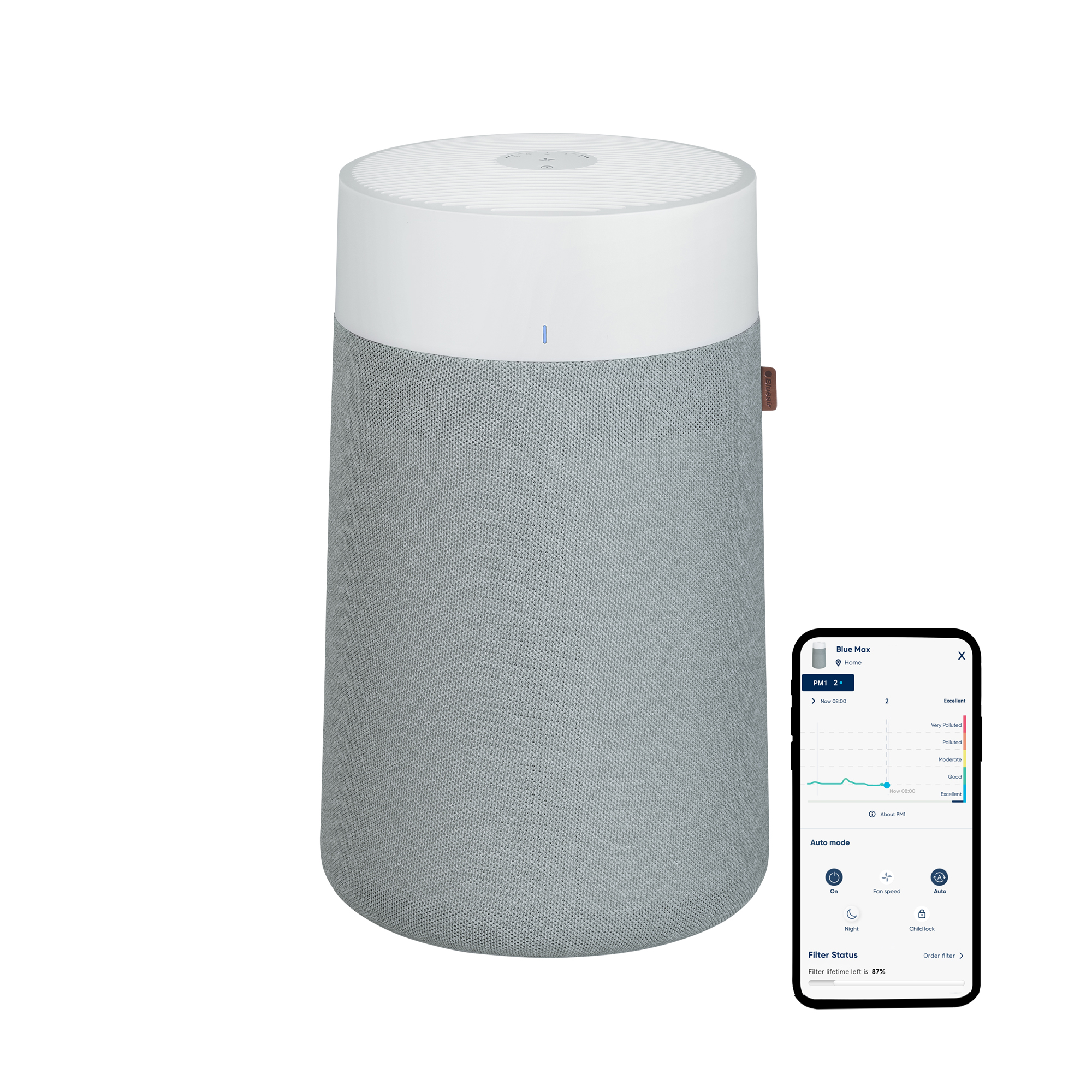
Top of our charts is this Blueair air purifier, which suits any space up to 48m². Unlike other air purifiers, which typically only filter airborne pollutants down to 0.3 microns in size, this one filters them down to 0.1 microns. You can read our review of it here.

If you have a smaller space, this compact air purifier will certainly fit the bill. For ease of use, it also has Wi-Fi connectivity and voice-activated controls that our tester loved in her review.

If replacing an air purifier fills you with dread, this Shark air purifier doesn't require a filter replacement for five whole years. It's also super reactive and releases a scent to banish odours, too. Here's our review of it.
Our air purifier reviews
Looking for a review of a particular air purifier? You'll find our top recommendations in our round-up of the best air purifiers. However, we've tested far more air purifiers than are contained in our shortlist. If you're searching for a review of a particular model, you may find it below.
- Blueair Blue Max 3250i air purifier review 5 out of 5 stars
- Dyson Purifier Cool PC1 air purifier review 5 out of 5 stars
- Dupray Bloom air purifier review 5 out of 5 stars
- MeacoDry Arete One Dehumidifier and air purifier review 4.5 out of 5 stars
- Levoit Core 300S air purifier review 4.5 out of 5 stars
- Shark NeverChange5 air purifier review 4.5 out of 5 stars
- MeacoClean CA-HEPA 76x5 WiFi Air Purifier review 4.5 out of 5 stars
- Dyson Purifier Hot+Cool Formaldehyde HP09 Fan Heater review 4.5 out of 5 stars
- Blueair Blue Pure 511 air purifier review 4 out of 5 stars
- Blueair Blue Pure Mini Max air purifier review 4 out of 5 stars
- HoMedics TotalClean 5-in-1 Tower Air Purifier review 4 out of 5 stars
- Vitesy Eteria Portable air purifier review 4 out of 5 stars
- DH Lifelabs Aaira Mini air purifier review 4 out of 5 stars
- Dimplex DXAPV3N Air Purifier review 3.5 out of 5 stars
Meet our air purifier testers

Lauren is the Content Editor for the House Manual section of Ideal Home, focusing on both floor care and air care.
She's now our resident air quality expert, testing countless air purifiers and researching everything there is to know about the many pollutants that can invade our homes - especially as someone who suffers from hay fever and has a dog that sheds.

Amy is currently Ideal Home's Sleep Editor, but previously held the role of Ecommerce Editor, where she served as our air quality expert before passing the baton on to Lauren.
Along with research into how air purifiers work and what makes an air purifier worth investing in, she also tested out multiple air purifiers to see how well they perform in a variety of air quality tests, including bestselling models from Philips, AEG, Blueair, and more.

Jullia has tested countless household appliances for Ideal Home, including many of the top-rated air purifiers in our guide.
She has hands-on experience with some of the biggest air purifier brands out there, and followed our strict testing criteria to review these products in her own home.

Jenny is Ideal Home's Senior Digital Editor, and regularly uses her skills and expertise to review new and exciting product releases.
She has put many of our favourite air purifiers through their paces in her beautiful Belfast home, including during a particularly dusty whole-home renovation.
So, there you have it. That's how we test air purifiers at Ideal Home! If you've spotted any new models you'd like us to test, drop us a comment below.

Lauren Bradbury has been the Content Editor for the House Manual section since January 2025 but worked with the team as a freelancer for a year and a half before that. She graduated with a Bachelor’s degree in English and Creative Writing from the University of Chichester in 2016. Then, she dipped her toe into the world of content writing, primarily focusing on home content. After years of agency work, she decided to take the plunge and become a full-time freelancer for online publications, including Real Homes and Ideal Home, before taking on this permanent role. Now, she spends her days searching for the best decluttering and cleaning hacks and creating handy how-to guides for homeowners and renters alike, as well as testing vacuums as part of her role as the Ideal Home Certified Expert in Training on Vacuums, having spent over 110 hours testing different vacuum models to date!
- Amy LockwoodSleep Editor